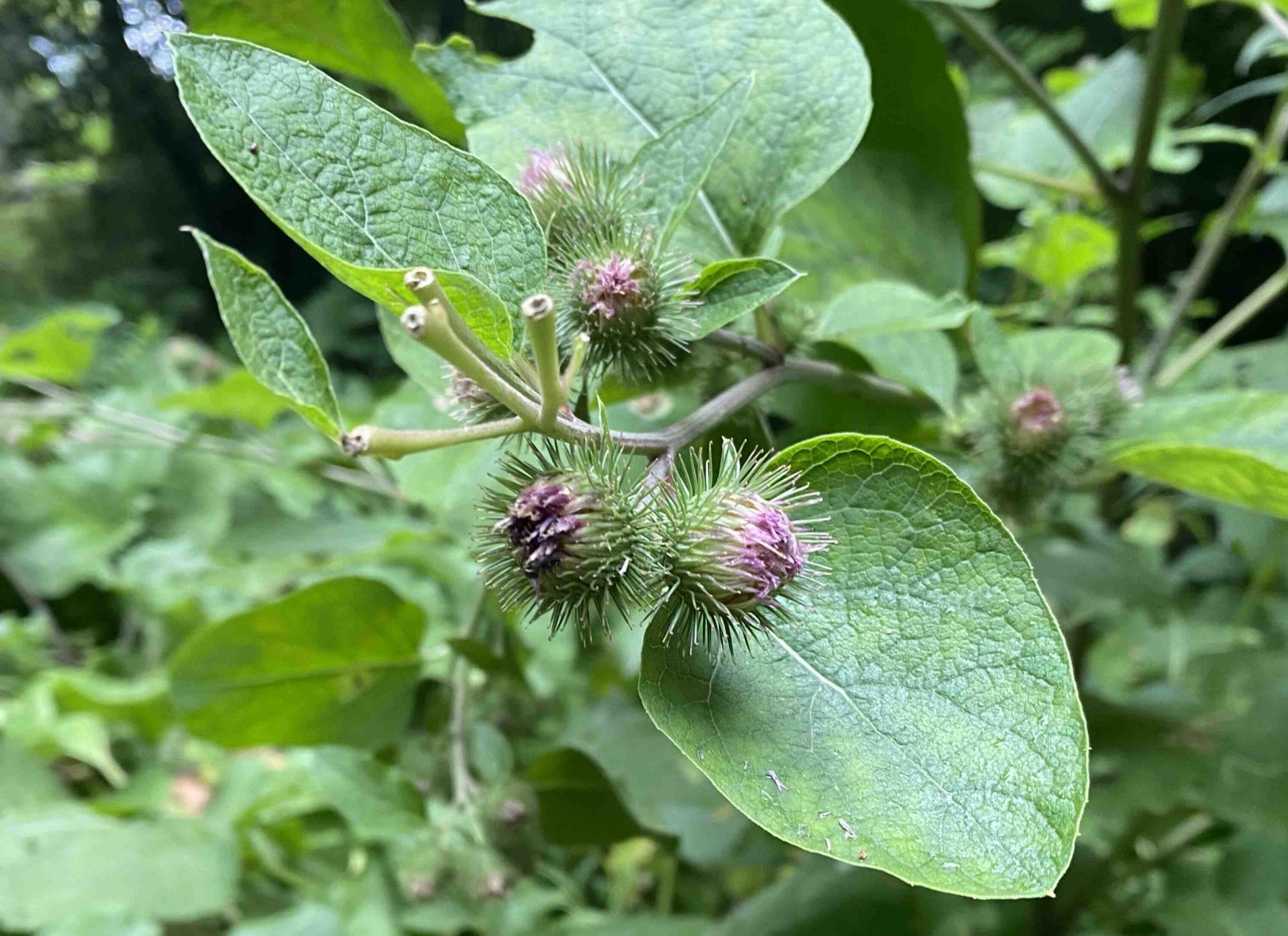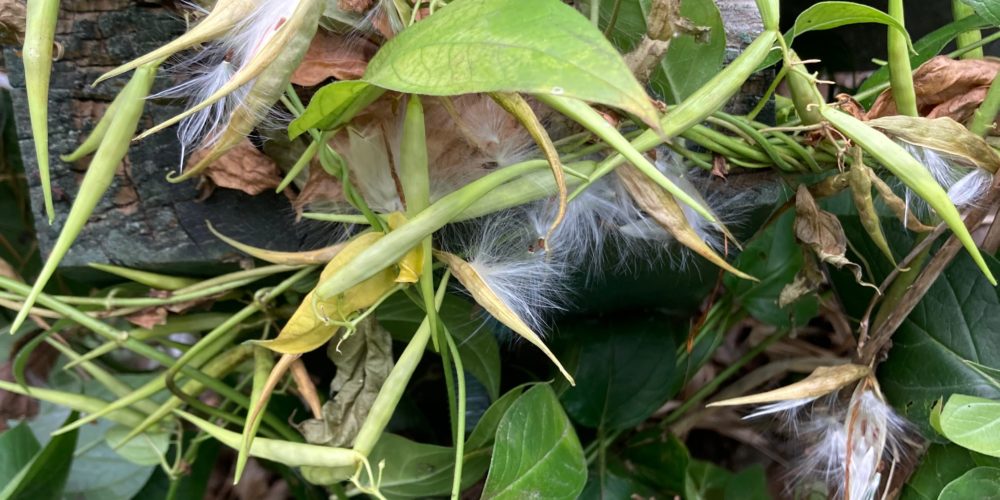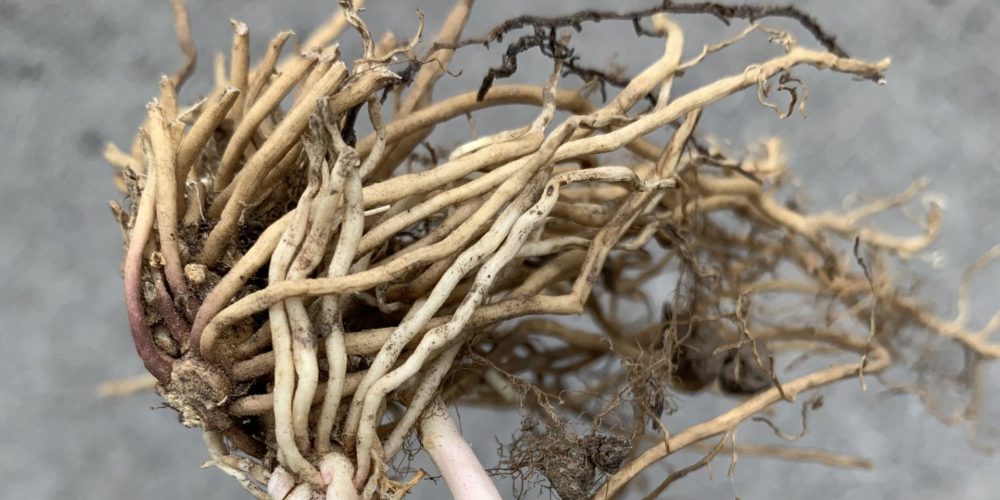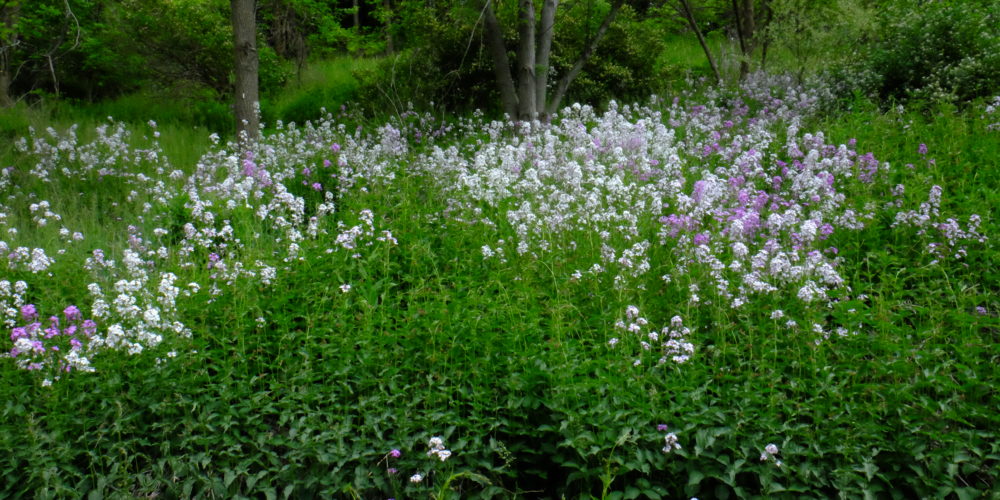What are invasive plants?
Invasive plants are non-native, which means they have been introduced to an environment where they shouldn’t be found naturally.
Non native plants are particularly problematic when they are extremely aggressive and outcompete native plants, leading to monocultures. Non-native monocultures decrease forest resilience; they are the opposite to biodiversity.
Why are they harmful?
Invasive plants don’t benefit their new environment but actually cause harm because many:1
- decrease biodiversity by using up resources like space and nutrients to the detriment of native, non-invasive plants2
- are not a food source for most native insects and mammals3
- have root systems that can cause soil erosion4
Start managing your invasive plants:

Collaboration is Key
Nature knows no boundaries, especially when it comes to invasive plants that grow between property lines without hesitation. It is essential to communicate and collaborate with your neighbours to create a healthy ravine.
Efforts may be wasted if invasive seeds from a neighbouring property travel into your yard. Let your neighbours know about any invasive plants on their property so they too can properly remove and dispose of them.
Collaboration does not need to end with invasive plant management - work with your neighbours in other ways to make our ravine lands as healthy as possible. For example, notice a way your neighbour’s fence could be more wildlife-friendly? Lend them some tips!
Collaboration between property owners, including the City, is a key part of successful stewardship - and our native plants and animals will thank you for it. Reach out to your neighbours to improve ravine health, or call 311 to contact the City.
Footnotes
1 – Ontario Invasive Plant Council. (2020). Invasive Plants. Retrieved from: https://www.ontarioinvasiveplants.ca/invasive-plants/
2 – Toronto City Planning Parks, Forestry, and Recreation with the Toronto and Region Conservation Authority. (2019).Wild, connected, and diverse: a biodiversity strategy for Toronto. Retrieved from: https://www.toronto.ca/legdocs/mmis/2019/ie/bgrd/backgroundfile-136906.pdf
3 – Tallamy, D. (2020). Garden for wildlife: natures best hope [online lecture]. Retrieved May 20, 2020, from: https://www.youtube.com/watch?v=iDRGryX1uVI
4 – Burylo, M., Rey, F., Mathys, N., & Dutoit, T. (2012). Plant root traits affecting the resistance of soils to concentrated flow erosion. Earth Surface Processes and Landforms, 37, 1463-1470. doi: 10.1002/esp.3248
5 – Ontario Invasive Plant Council. (2020). Invasive plants: impacts. Retrieved from: https://www.ontarioinvasiveplants.ca/invasive-plants/impacts/
6 – Ontario Invasive Plant Council. (2020). Invasive plants: impacts. Retrieved from: https://www.ontarioinvasiveplants.ca/invasive-plants/impacts/
7 – Ontario Invasive Plant Council. (2020). Invasive plants: impacts. Retrieved from: https://www.ontarioinvasiveplants.ca/invasive-plants/impacts/




